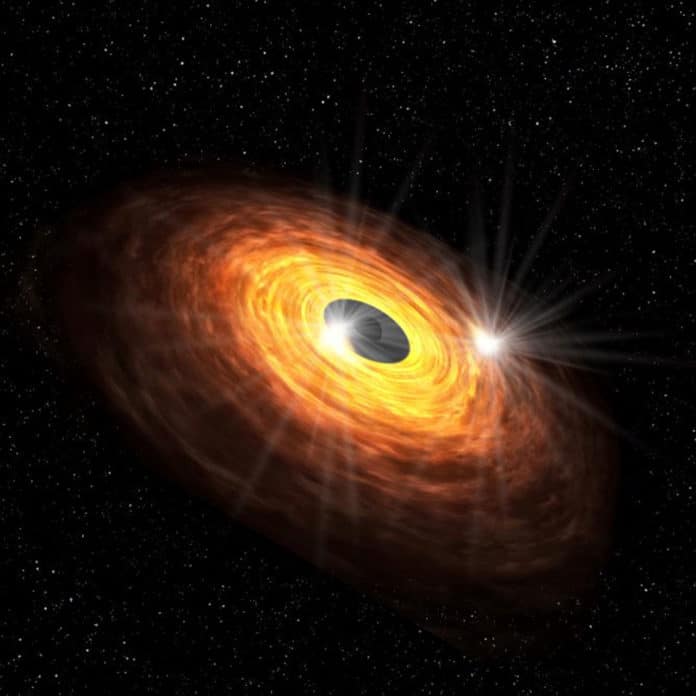Sgr A* sometimes flares up in millimeter wavelength. Now, for the first time, astronomers obtained high-quality data of radio-wave intensity variation of Sgr A* for ten days, 70 minutes per day using Atacama Large Millimeter/submillimeter Array (ALMA). They identified two trends: quasi-periodic variations with a typical time scale of 30 minutes and hour-long slow variations.
These quasi-periodic flickers from the center of the Milky Way, Sagittarius (Sgr) A* might be the result of the rotation of radio spots circling the supermassive black hole with an orbit radius smaller than that of Mercury, suggests scientists. According to scientists, this is an exciting clue to investigate space-time with extreme gravity.
Astronomers think that there is a supermassive black hole with a mass of 4 million suns is located at the center of our Sgr A*. The flares of Sgr A* have been observed in millimeter-wavelength, infrared light, and X-ray.
Although the variations detected with ALMA are much smaller than the ones previously noticed, and these levels of slight variations may always occur in Sgr A*.
The black hole does not generate any emissions on its own. It is the scorching gaseous disk around the black hole that produces emissions. The gas around the black hole does not go straight to the gravitational well, but it rotates around the black hole to form an accretion disk.
In this study, astronomers focused on short timescale variations. They found that the variation period of 30 minutes is comparable to the orbital period of the innermost edge of the accretion disk with the radius of 0.2 astronomical units (1 astronomical unit corresponds to the distance between the Earth and the Sun: 150 million kilometers). For comparison, Mercury, the solar system’s innermost planet, circles the Sun at a distance of 0.4 astronomical units. Considering the colossal mass at the center of the black hole, its gravity effect is also extreme in the accretion disk.
Tomoharu Oka, a professor at Keio University, said, “This emission could be related to some exotic phenomena occurring at the very vicinity of the supermassive black hole.”
Their scenario is as follows. Hot spots are sporadically formed in the disk and circle around the black hole, emitting strong millimeter waves. According to Einstein’s particular relativity theory, the emission is much amplified when the source is moving toward the observer with speed comparable to that of light. The rotation speed of the inner edge of the accretion disk is quite large, so this extraordinary effect arises. The astronomers believe that this is the origin of the short-term variation of the millimeter emission from Sgr A*.
Oka said, “The variation might affect the effort to make an image of the supermassive black hole with the Event Horizon Telescope. In general, the faster the movement is, the more difficult it is to take a photo of the object. Instead, the variation of the emission itself provides compelling insight for the gas motion. We may witness the very moment of gas absorption by the black hole with a long-term monitoring campaign with ALMA.”
Journal Reference:
- Yuhei Iwata, Time Variations in the Flux Density of Sgr A* at 230 GHz Detected with ALMA. DOI: 10.3847/2041-8213/ab800d
